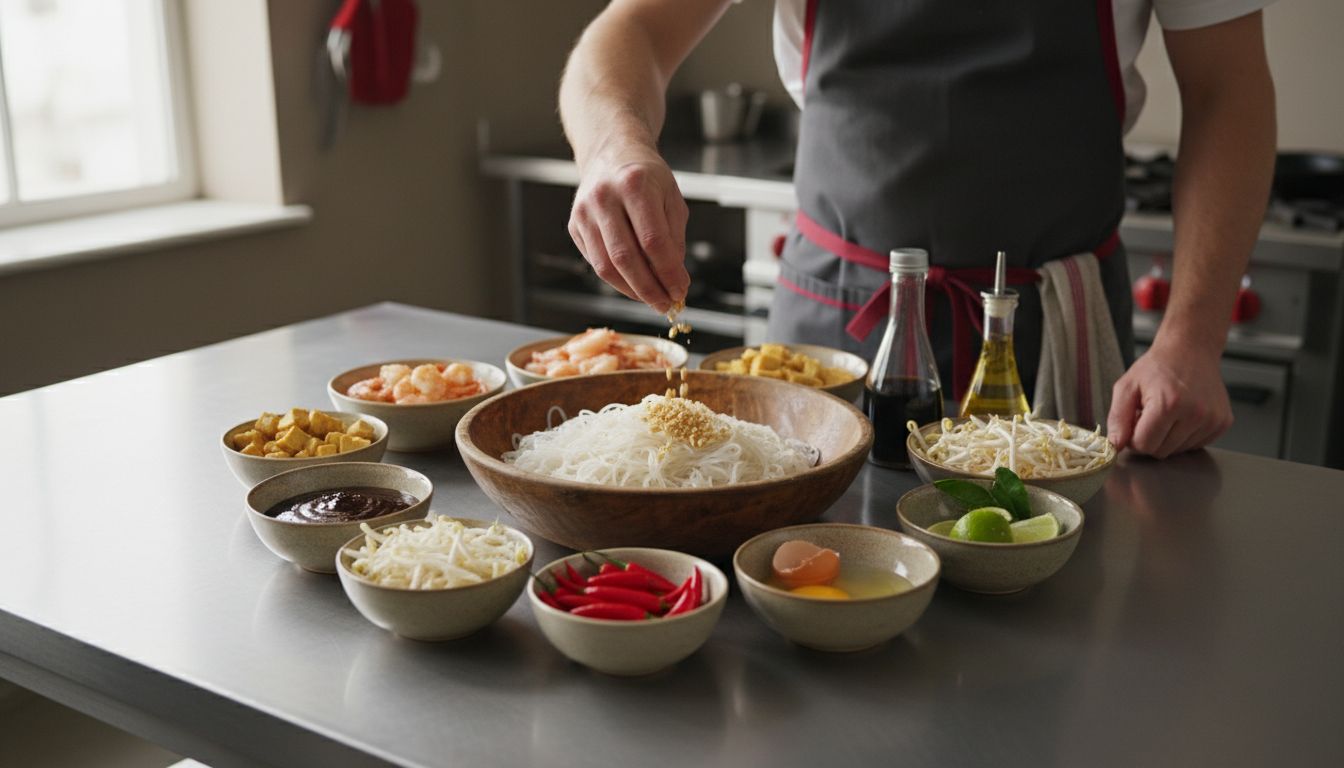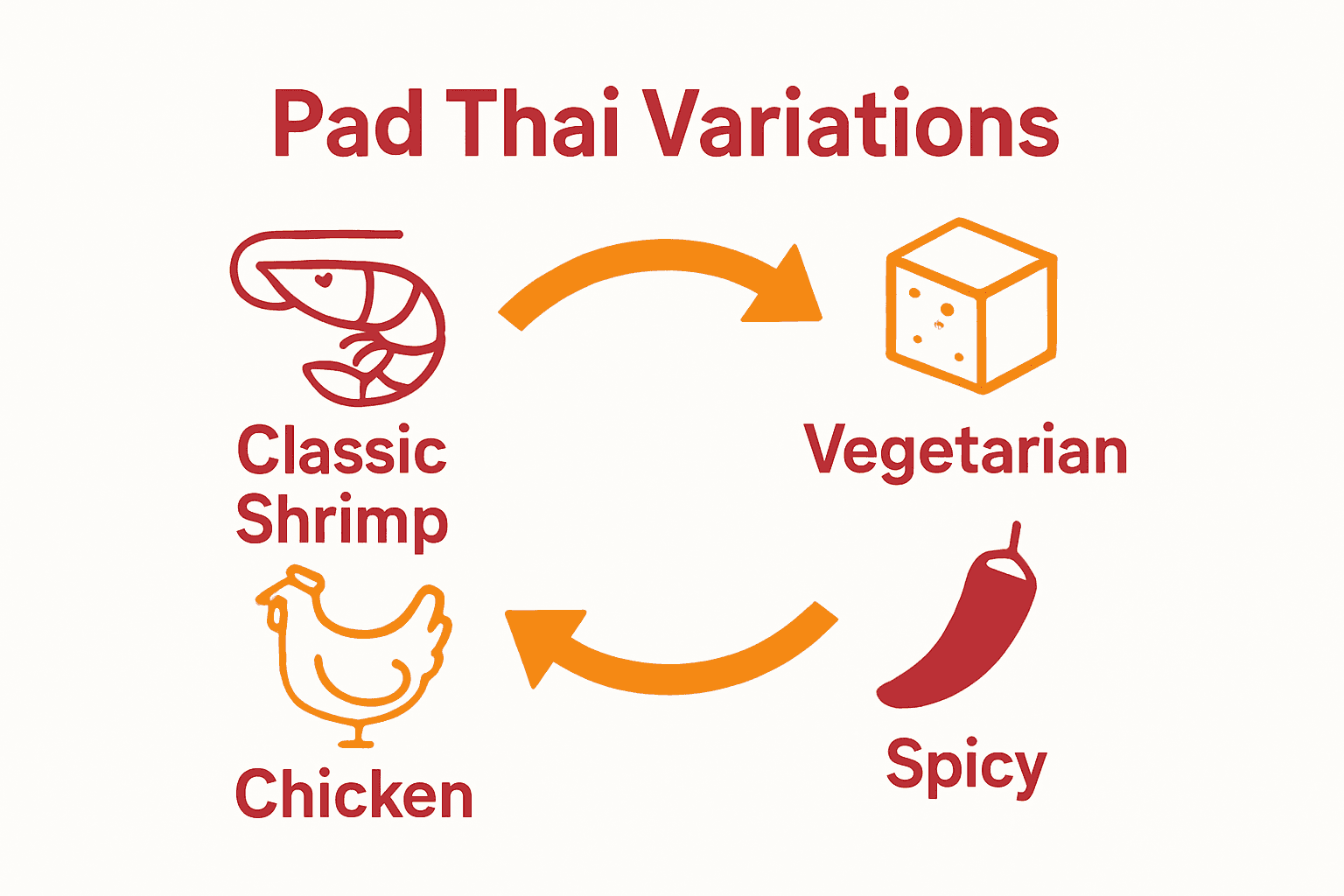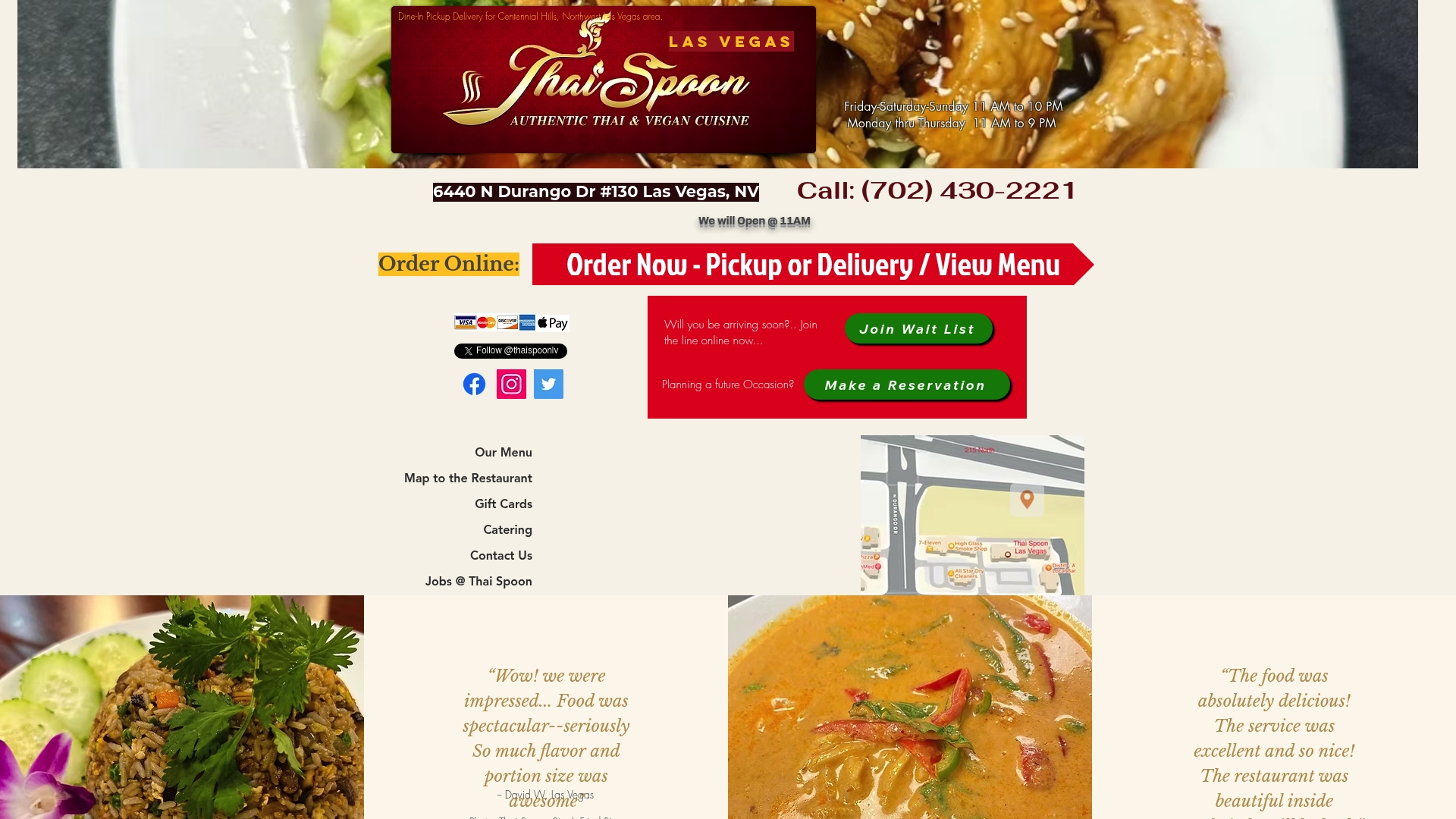What Is Pad Thai? Complete Guide to Ingredients, Flavor, and Variations
- mail469793
- 5 days ago
- 7 min read

Over 70 million plates of Pad Thai are enjoyed around the world every year, but few realize how deeply this iconic dish is woven into Thailand’s history and national identity. Beyond its delicious flavors, Pad Thai carries a rich legacy shaped by migration, innovation, and cultural pride. If you want to understand why Pad Thai is much more than just noodles, exploring its diverse roots and signature tastes will open your eyes to what makes it truly special.
Table of Contents
Key Takeaways
Point | Details |
Cultural Significance | Pad Thai reflects Thailand’s complex cultural history, evolving into a national icon through political strategy during WWII to unify the nation. |
Signature Ingredients | The dish features rice noodles, tamarind, fish sauce, and peanuts, creating a balanced flavor profile that highlights Thai culinary artistry. |
Dietary Adaptations | Pad Thai can accommodate various dietary needs with gluten-free, vegetarian, and low-carb options, making it accessible for diverse consumers. |
Global Popularity | The dish has become a representation of Thai cuisine worldwide, with unique local adaptations found in places like Las Vegas, showcasing its versatility. |
Defining Pad Thai and Its Cultural Roots
Pad Thai is far more than just another noodle dish – it’s a culinary symbol that tells the story of Thailand’s complex cultural history. According to the Smithsonian Magazine, the dish actually emerged from a fascinating blend of cultural influences, particularly through Chinese immigrants who introduced stir-fried noodle techniques to Thailand.
During the 1940s, Pad Thai transformed from a regional recipe into a national culinary icon. As Wikipedia explains, this wasn’t just a gastronomic evolution but a strategic political move. Under Prime Minister Plaek Phibunsongkhram’s leadership, the government actively promoted Pad Thai as part of a broader nation-building initiative during World War II. The strategic goal was twofold: reduce rice consumption during wartime shortages and create a unified national identity through a shared culinary experience.
The dish itself represents a perfect harmony of flavors and techniques. Typically featuring rice noodles stir-fried with eggs, tofu, dried shrimp, and a tangy tamarind-based sauce, Pad Thai embodies the complex flavor profile that makes Thai cuisine so distinctive. Its ingredients reflect Thailand’s multicultural heritage – Chinese cooking techniques merged with local Thai ingredients and seasonings. Explore more about Thai cuisine’s unique characteristics in our guide on what makes Thai cuisine distinctive.
Today, Pad Thai has transcended its origins to become a globally recognized dish, symbolizing Thai culinary excellence. What began as a wartime strategy to unite a nation through food has now become an international ambassador for Thai gastronomy, enjoyed by millions worldwide who appreciate its perfect balance of sweet, sour, salty, and umami flavors.
Signature Ingredients and Flavor Profile
Pad Thai is a symphony of carefully balanced ingredients that create a culinary masterpiece unlike any other dish. According to Wikipedia, the signature ingredients include rice noodles, eggs, tofu, tamarind juice, palm sugar, fish sauce, shrimp, bean sprouts, garlic, shallots, red chili pepper, lime, and peanuts. This diverse array of components forms the foundation of what makes Pad Thai so incredibly complex and delicious.
The flavor profile is a delicate dance of taste sensations. Research from JETIR highlights how the dish achieves its remarkable taste through a precise interplay of ingredients. The tanginess of tamarind paste, the saltiness of fish sauce, and the subtle sweetness of palm sugar create a harmonious blend that tantalizes the palate. This intricate balance is further enhanced by the textural contrast provided by crunchy peanuts and fresh bean sprouts.

Key ingredients each play a crucial role in creating Pad Thai’s distinctive taste:
Tamarind: Provides a sharp, sour note
Fish Sauce: Adds deep umami and saltiness
Palm Sugar: Brings a subtle, rounded sweetness
Peanuts: Contribute crunch and nutty depth
Discover the deeper nuances of Thai flavor profiles in our comprehensive guide to understanding authentic Thai tastes, which will help you appreciate the intricate culinary artistry behind this beloved dish. Pad Thai isn’t just a meal – it’s a carefully orchestrated culinary experience that represents the pinnacle of Thai cooking, where each ingredient is carefully selected to create a perfect balance of flavors that dance across your taste buds.
Popular Pad Thai Variations Explained
According to Wikipedia, Pad Thai has evolved dramatically, showcasing remarkable culinary diversity across different regions and dining contexts. The dish’s variations range from traditional street food styles to more elaborate restaurant interpretations, demonstrating its incredible adaptability as a beloved national dish.
Traditional variations typically differ in their preparation and texture. The classic Thai street food version tends to be lighter and drier, while Western restaurant adaptations often feature a more substantial, oilier preparation. Vegetarian and vegan versions have also gained significant popularity, replacing traditional proteins with tofu, tempeh, or plant-based alternatives that maintain the dish’s signature flavor profile.
Innovative culinary approaches have pushed Pad Thai’s boundaries even further.
Research from TCI-Thaijo highlights emerging trends like the Pad Thai crispy bar, which reimagines the classic dish in exciting new formats. These contemporary interpretations demonstrate the dish’s remarkable versatility and global appeal.
Some popular Pad Thai variations include:

Seafood Pad Thai: Featuring shrimp, squid, or mixed seafood
Chicken Pad Thai: A protein-rich version with grilled or stir-fried chicken
Vegetarian Pad Thai: Loaded with tofu and additional vegetables
Spicy Pad Thai: Enhanced with extra chili peppers for heat lovers
Explore more exciting Thai culinary options in our guide to the 7 best Thai dishes, which will introduce you to the incredible diversity of Thai cuisine beyond Pad Thai.
Health, Dietary, and Allergen Considerations
Research from JETIR reveals that Pad Thai’s nutritional profile is complex and highly variable, depending on specific ingredient selections and preparation techniques. The traditional recipe can be relatively high in carbohydrates and fats, making portion control and ingredient modifications crucial for those watching their dietary intake.
Dietary adaptations have become increasingly important for accommodating various nutritional needs. Gluten-free diners can often enjoy Pad Thai by using rice noodles, while vegetarians and vegans have multiple protein substitution options like tofu or tempeh. According to research, allergen considerations are particularly important, with common ingredients like peanuts and shellfish requiring special attention for those with food sensitivities.
Key dietary considerations for Pad Thai include:
Gluten-Free Options: Using rice noodles and confirming sauce ingredients
Vegetarian Modifications: Replacing proteins with tofu or plant-based alternatives
Low-Carb Adaptations: Using zucchini noodles or reducing noodle portions
Protein-Focused Variations: Increasing lean protein content
Discover more about vegan Thai cuisine options in our comprehensive guide to Vegan Pad Thai, which offers insights into creating delicious, allergen-friendly versions of this classic dish. Understanding these dietary nuances allows everyone to enjoy Pad Thai’s incredible flavors, regardless of nutritional restrictions.
How Pad Thai Is Enjoyed in Las Vegas
According to the Smithsonian Magazine, Pad Thai has found a vibrant home in Las Vegas, reflecting its global culinary popularity. The city’s diverse dining scene embraces this iconic Thai dish, offering everything from traditional preparations to innovative interpretations that cater to local tastes and preferences.
Local restaurants have skillfully adapted Pad Thai to suit the Las Vegas palate. As Wikipedia notes, urban dining scenes like Las Vegas often modify traditional recipes, creating unique variations that blend authentic flavors with local culinary expectations. This means diners can experience Pad Thai ranging from street food-style preparations to upscale restaurant presentations.
Pad Thai in Las Vegas is enjoyed in multiple contexts:
Casual Dining: Quick, flavorful lunch and dinner options
Fine Dining: Gourmet interpretations with premium ingredients
Takeout and Delivery: Convenient options for home dining
Catering: Popular choice for events and group gatherings
Discover the best Thai food spots in Las Vegas with our comprehensive dining guide, which will help you navigate the city’s incredible Thai culinary landscape. Whether you’re a local resident or a visitor, Las Vegas offers a Pad Thai experience that promises to delight and surprise your taste buds.
Experience Authentic Pad Thai Crafted Just for You
Understanding the perfect balance of tamarind, fish sauce, palm sugar, and crunchy peanuts is key to enjoying true Pad Thai. If you are craving a dish that masterfully blends these signature flavors or looking for vegan and gluten-free options without sacrificing authenticity, Thai Spoon Las Vegas is your perfect destination. We bring the vibrant taste of Thailand to the northwest Las Vegas area with recipes inspired by tradition and crafted to satisfy your palate.

Discover the rich history and variations of Pad Thai right here with us. Whether you want a classic seafood version, a spicy kick, or a plant-based twist, we have it all ready for pickup, delivery, or dine-in. Don’t wait to enjoy a genuine Thai experience that honors the cultural roots and complex flavor profile featured in this guide. Explore our menu and order now at Thai Spoon Las Vegas to taste the harmony of authentic ingredients and bold flavors in every bite.
Frequently Asked Questions
What are the main ingredients in Pad Thai?
The main ingredients in Pad Thai include rice noodles, eggs, tofu, tamarind juice, palm sugar, fish sauce, dried shrimp, bean sprouts, garlic, shallots, red chili pepper, lime, and peanuts. These components create the dish’s unique flavor profile.
How does Pad Thai achieve its distinct flavor?
Pad Thai achieves its distinct flavor through a careful balance of tanginess from tamarind, saltiness from fish sauce, and sweetness from palm sugar. The interplay of these flavors, combined with the crunch of peanuts and freshness of bean sprouts, contributes to its complex taste.
What are some popular variations of Pad Thai?
Popular variations of Pad Thai include Seafood Pad Thai with shrimp or squid, Chicken Pad Thai featuring grilled or stir-fried chicken, Vegetarian Pad Thai loaded with tofu and vegetables, and Spicy Pad Thai, which includes extra chili peppers for heat lovers.
Are there gluten-free options for Pad Thai?
Yes, gluten-free options for Pad Thai typically use rice noodles, which are naturally gluten-free. It’s important to confirm that any sauces used are also gluten-free to ensure the dish meets dietary restrictions.
Recommended











Comments